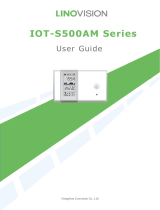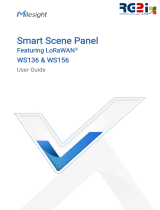
Contents
1. Product Introduction................................................................................................................................. 5
1.1 Overview........................................................................................................................................... 5
1.2 Features............................................................................................................................................5
2. Hardware Introduction..............................................................................................................................5
2.1 Packing List......................................................................................................................................5
2.2 Hardware Overview.........................................................................................................................6
2.3 E-link Screen.................................................................................................................................... 6
2.3.1 Screen Description.............................................................................................................. 6
2.3.2 Screen Mode Switch........................................................................................................... 8
2.4 Power Button................................................................................................................................... 8
2.5 Dimensions(mm)............................................................................................................................ 8
3. Power Supply............................................................................................................................................. 9
4. Operation Guide......................................................................................................................................... 9
4.1 Log in the ToolBox.......................................................................................................................... 9
4.1.1 NFC Configuration............................................................................................................... 9
4.1.2 USB Configuration............................................................................................................. 11
4.2 LoRaWAN Settings....................................................................................................................... 12
4.3 Time Synchronization...................................................................................................................15
4.4 Basic Settings................................................................................................................................16
4.5 Advanced Settings........................................................................................................................ 16
4.5.1 Data Collection Settings................................................................................................... 16
4.5.2 Calibration Settings...........................................................................................................17
4.5.3 Threshold Settings............................................................................................................ 18
4.6 Maintenance.................................................................................................................................. 18
4.6.1 Upgrade............................................................................................................................... 18
4.6.2 Backup.................................................................................................................................19
4.6.3 Reset to Factory Default................................................................................................... 20
5. Installation................................................................................................................................................21
5.1 Installation Note............................................................................................................................ 21
5.2 Wall Mounting................................................................................................................................22
6. Milesight IoT Cloud Management........................................................................................................ 22
6.1 Add a Milesight Gateway............................................................................................................. 22
6.2 Add AM104/AM107 to Milesight IoT Cloud............................................................................. 24
7. Device Payload........................................................................................................................................ 25
7.1 Basic Information..........................................................................................................................25
7.2 Sensor Data....................................................................................................................................25
7.3 Downlink Commands................................................................................................................... 26
Appendix....................................................................................................................................................... 26
Carbon Dioxide Levels and Guidelines.............................................................................................26





















